How to Choose Good Soil for Vegetable Garden: Tips for Healthy Plants
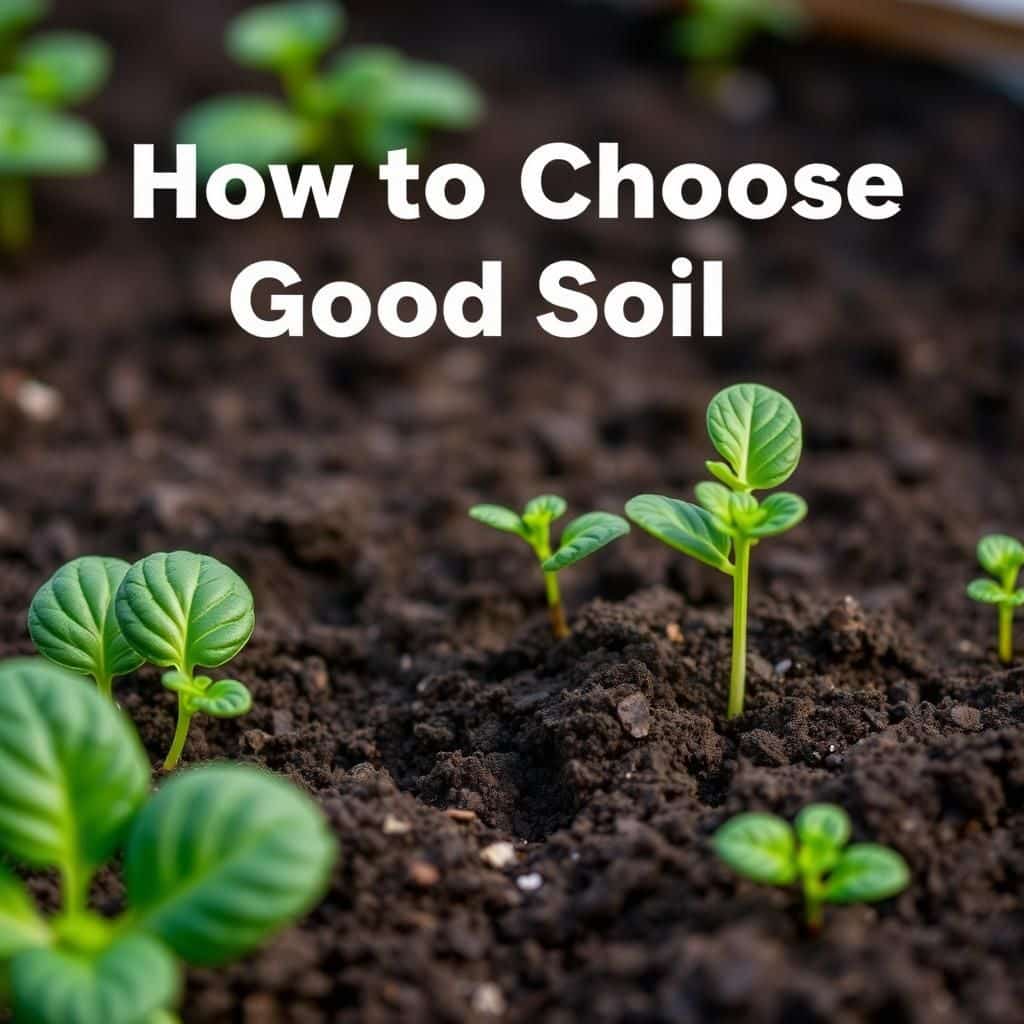
Choosing the right soil is a crucial step in establishing a thriving vegetable garden. Healthy plants depend on nutrient-rich, well-draining soil that supports their growth and resilience. With countless soil options available, it can be overwhelming for gardeners to make the best choice. This article will provide essential tips for selecting high-quality soil, including factors to consider such as pH levels, texture, and organic matter content. By understanding the characteristics of good soil, you can create a foundation that nurtures your vegetables, ensuring a bountiful harvest and vibrant garden. Let’s dig into the details!
Importance of Quality Soil for a Vegetable Garden
Quality soil is crucial for a successful vegetable garden as it provides essential nutrients, structure, and a healthy environment for plant roots to grow. The right mix of organic matter, minerals, and microorganisms creates a balanced ecosystem that supports plant health and productivity. Good soil not only aids in moisture retention and drainage but also fosters beneficial interactions between plants and soil organisms. Thus, investing time in understanding and improving soil quality is key to achieving a bountiful harvest.
Key Components of Good Soil
The key components of good soil include sand, silt, and clay, which together form what is known as soil texture. Sand allows for drainage and aeration, while silt contributes to nutrient retention. Clay, despite its ability to hold water, can become compacted and hinder root growth. An ideal mix typically features a balance of these components, creating a loamy texture that supports healthy vegetable growth by optimizing drainage and nutrient availability.
Benefits of Organic Matter
Incorporating organic matter such as compost or well-rotted manure into the soil can significantly enhance its quality. Organic matter improves soil structure by promoting aggregation, allowing for better air circulation and root penetration. It also increases the soil's nutrient and water retention capacity, allowing vegetables to thrive. Furthermore, it introduces beneficial microorganisms into the soil, fostering a vibrant ecosystem that contributes to plant health and resilience.
Soil pH and Its Impact
The pH level of soil is a critical factor that influences nutrient availability for plants. Most vegetables thrive in a pH range of 6.0 to 7.0, which allows for optimal nutrient absorption. If the soil pH is too low (acidic) or too high (alkaline), certain nutrients can become less available, leading to deficiencies that may affect plant growth. Testing soil pH and making necessary amendments, such as adding lime to raise pH or sulfur to lower it, is essential for creating a thriving vegetable garden.
Drainage and Aeration
Proper drainage and aeration are essential characteristics of good soil that greatly affect the health of a vegetable garden. Poorly drained soil can lead to root rot and other diseases, while overly compacted soil restricts root growth and prevents access to vital nutrients. Amending soil with organic matter improves its structure, enhancing drainage while allowing space for air circulation. This balance encourages deep root growth and helps ensure that plants receive the oxygen necessary for optimal performance.
Soil Testing and Amendments
Conducting regular soil tests is a vital practice for maintaining good soil health in a vegetable garden. These tests reveal nutrient levels, pH, and organic matter content, providing insights into any deficiencies or excesses that need to be addressed. Based on the test results, appropriate amendments can be made, such as adding fertilizers, adjusting pH levels, or incorporating organic matter. These tailored adjustments contribute to creating an ideal growing environment for vegetables and maximizing their yield potential.
| Soil Component | Description | Role in Vegetable Growth |
|---|---|---|
| Sand | Coarse particles that improve drainage | Prevents waterlogging |
| Silt | Medium-sized particles that retain moisture | Nutrient-rich |
| Clay | Fine particles that hold water | Can lead to compaction issues |
| Organic Matter | Decomposed material from plants and animals | Enhances nutrient availability |
| pH | Measurement of soil acidity or alkalinity | Affects nutrient uptake |
Which soil is best for a vegetable garden?
:max_bytes(150000):strip_icc()/topsoil-vs-garden-soil-7501844-7d8db8d8a1aa4d85b91458b3e2597073.png)
To determine the best soil for a vegetable garden, one must consider several key factors that support plant growth and ensure successful cultivation. Vegetable plants thrive in soil that is rich in nutrients, well-draining, and retains adequate moisture while providing a suitable structure for root development. The ideal soil can be characterized as loamy, which consists of a balanced mix of sand, silt, and clay.
Loamy soil typically has the following qualities:
1. Good Drainage: It prevents waterlogging, which can lead to root rot.
2. Nutrient-Rich: It contains organic matter that supplies essential nutrients.
3. Optimal pH: Ideally, vegetable plants prefer a slightly acidic to neutral pH level (6.0 to 7.0).
4. Moisture Retention: It can hold sufficient moisture without becoming overly saturated.
5. Aeration: Loamy soil allows air to circulate, promoting healthy root growth.
Understanding Soil Types
Different soil types have unique characteristics that can affect vegetable growth. The main soil types include:
- Sandy Soil: Drains quickly but often lacks nutrients and moisture.
- Clay Soil: Retains moisture and nutrients well, but can become compacted, leading to poor aeration.
- Silt Soil: Holds moisture better than sandy soil but can become easily compacted.
- Loam Soil: The ideal mix of sand, silt, and clay, providing a well-balanced environment.
- Peaty Soil: Rich in organic matter, retains moisture well but may be too acidic for some vegetables.
Importance of Soil Fertility
Soil fertility is crucial for the health of vegetable plants. It encompasses the presence of vital nutrients:
See also: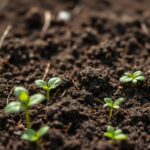
- Nitrogen: Essential for leaf growth and overall vegetative health.
- Phosphorus: Supports root development and flower/fruit production.
- Potassium: Enhances disease resistance and overall plant strength.
- Calcium: Important for cell wall structure and prevents blossom-end rot in tomatoes.
- Magnesium: Key component of chlorophyll and aids in photosynthesis.
Soil pH Levels
The pH level of soil directly affects nutrient availability to plants. Understanding pH levels is essential:
- Acidic Soil (pH below 6.0): May hinder nutrient uptake, especially of calcium and magnesium.
- Neutral Soil (pH 6.0 to 7.0): Most ideal for vegetable gardens as it supports a broad range of plants.
- Alkaline Soil (pH above 7.0): May lead to nutrient lockout, particularly iron and manganese.
- Testing Soil: Using a soil test kit can help gardeners adjust pH accordingly.
- Amendments: Adding sulfur can lower pH, while lime can increase it.
Soil Amendments for Vegetable Gardens
To enhance soil quality, amendments can be added:
- Organic Matter: Compost improves soil structure and fertility.
- Mulch: Helps retain moisture and suppress weeds while breaking down to enrich soil.
- Manure: Provides nutrients but should be well-composted to avoid pathogens.
- Cover Crops: Planting cover crops can improve soil health and prevent erosion.
- Mineral Supplements: Adding rock phosphate or greensand can boost nutrient content.
Water Retention and Drainage
Both water retention and drainage capabilities are key for a productive vegetable garden:
- Drainage: Excess water can suffocate roots and cause diseases.
- Moisture Retention: Soils should retain moisture to prevent plants from wilting.
- Testing Drainage: A simple test involves digging a hole, filling it with water, and observing how quickly it drains.
- Improving Drainage: Adding sand or perlite can improve drainage in clay soils.
- Retaining Humidity: Using organic mulch can help keep soil moist.
What is the best soil mix for a vegetable garden?
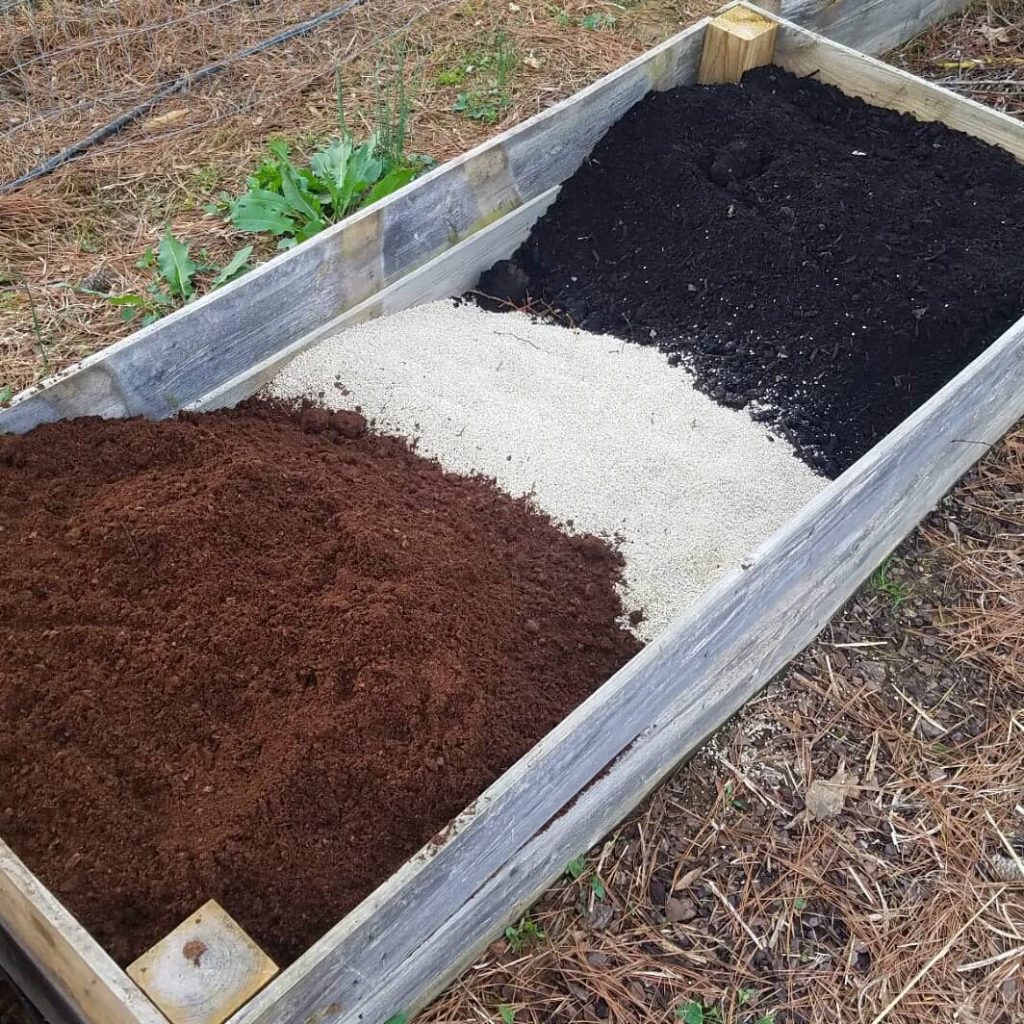
The best soil mix for a vegetable garden generally comprises a well-balanced combination of organic matter, minerals, and nutrients, ensuring optimal growth conditions for vegetables. The ideal soil mix should provide good drainage, aeration, and retain moisture while allowing essential nutrients to be available to plants.
Soil Components
The components of an ideal soil mix are crucial for growing healthy vegetables. The primary components typically include:
- Topsoil: This is the uppermost layer of soil that is rich in nutrients and organic matter.
- Compost: Decomposed organic material that adds nutrients and improves soil structure.
- Peat Moss: Helps retain moisture and provides aeration to the soil mix.
- Perlite or Vermiculite: These minerals improve aeration and drainage.
- Sand: Enhances drainage but should be used in moderation to maintain soil structure.
Soil pH Level
Maintaining the right soil pH level is essential for nutrient absorption by plants. Most vegetables thrive in a slightly acidic to neutral soil, typically around a pH of 6.0-7.0.
- Testing pH: Use a soil pH tester to analyze the existing soil.
- Amending Soil: Add lime to increase pH or sulfur to decrease it, depending on your test results.
- Regular Monitoring: Check the pH regularly to ensure optimal growing conditions throughout the season.
Nutrient Requirements
Vegetables require various nutrients for growth, including nitrogen, phosphorus, and potassium. A balanced soil mix should cater to these nutrient needs.
- Nitrogen: Essential for leafy growth; add compost or well-rotted manure to provide nitrogen.
- Phosphorus: Supports root development; bone meal can be an excellent source.
- Potassium: Important for overall plant health; use potassium sulfate or greensand as amendments.
Soil Texture
The texture of the soil mix affects drainage and aeration, crucial for vegetable health. A good soil mix typically has a loamy texture, which is a balance between clay, silt, and sand.
- Loam Soil: Ideal mix of clay, sand, and silt for vegetable gardens.
- Aeration: Ensures oxygen reaches root systems; avoid compacted soils.
- Drainage: Prevents waterlogging which can lead to root rot; amend clayey soils with sand or organic matter.
Water Retention
A good vegetable garden soil mix should efficiently retain moisture while preventing waterlogging.
- Organic Matter: Incorporating compost enhances moisture retention capabilities.
- Mulching: Adding organic mulch on the surface helps preserve soil moisture.
- Watering Practices: Implement consistent watering routines, especially during dry spells, to maintain moisture levels.
What is the best top soil for a vegetable garden?
:max_bytes(150000):strip_icc()/topsoil-vs-garden-soil-7501844-7d8db8d8a1aa4d85b91458b3e2597073.png)
The best topsoil for a vegetable garden should be rich in organic matter and provide essential nutrients for healthy plant growth. Here are some key components to look for in topsoil for your vegetable garden:
1. Organic Matter Content
High-quality topsoil should contain a significant amount of organic matter, which improves soil structure and provides nutrients. Organic matter can come from decomposed leaves, compost, or well-rotted manure. It enhances the soil's ability to retain moisture and supports beneficial microbial activity.
See also: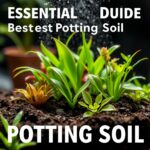
- Organic amendments like compost or well-decomposed manure help to enrich topsoil.
- Contains essential nutrients that plants need for growth.
- Improves moisture retention, reducing the need for frequent watering.
2. Texture and Drainage
The texture of the topsoil is crucial as it affects water drainage and air circulation. A good topsoil mix should ideally be a blend of sand, silt, and clay. This combination facilitates proper drainage while retaining necessary moisture.
- Loamy soil, which is a mix of sand, silt, and clay, is ideal for vegetable gardens.
- Good drainage prevents root rot and promotes healthy root development.
- Allows for adequate air circulation, which is essential for plant roots.
3. Nutrient Content
Topsoil should be rich in essential nutrients such as nitrogen, phosphorus, and potassium (NPK). These nutrients are vital for the growth and production of vegetables. Testing the nutrient levels in your soil can help determine if any amendments are needed.
- Nitrogen is critical for leaf growth and overall plant vigor.
- Phosphorus encourages strong root growth and blooming.
- Potassium helps in overall plant health and disease resistance.
4. pH Level
The pH level of the topsoil should ideally be between 6.0 and 7.5 for optimum vegetable growth. This range allows plants to efficiently absorb the nutrients in the soil. You can test your soil's pH using DIY kits or through local agricultural extensions.
- A neutral pH (around 7.0) supports most vegetable plant growth.
- Soils that are too acidic or alkaline can hinder nutrient uptake.
- Adding lime can raise pH, while sulfur can lower it when necessary.
5. Weed and Pest Control
Quality topsoil should be relatively free of weeds and pest infestations. Infested or weed-laden topsoil can introduce competition for nutrients and even pests that can harm your vegetables. Always source your topsoil from reputable suppliers, or consider making your own.
- Using heat treatment can kill weed seeds and harmful pathogens.
- Maintain cleanliness in your garden to prevent weed growth.
- Consider crop rotation and companion planting to manage pests naturally.
What is the best soil for a raised vegetable garden?

The best soil for a raised vegetable garden consists of a well-balanced mix that can promote healthy plant growth. This mix should be nutrient-rich, well-draining, and supportive of root development. Typically, a combination of topsoil, compost, and other organic materials yields the best results. Here’s a detailed look at the components:
Choosing the Right Topsoil
The topsoil is the foundation of your soil mix, providing the necessary base for your garden. You should aim for high-quality topsoil that is free of contaminants and has a rich nutrient profile.
- Look for topsoil that retains moisture but drains well to prevent waterlogging.
- Check for organic matter—this enhances nutrient content and structure.
- Consider sourcing from reputable suppliers who follow sustainable practices.
The Importance of Compost
Compost is a vital component of raised garden soil as it enriches the topsoil with essential nutrients. It not only improves soil texture but also adds beneficial microorganisms to promote plant health.
- Use well-aged compost that is dark and crumbly, indicating it has decomposed properly.
- Mix compost in ratios of at least 25-50% of your overall soil mix for optimal benefits.
- Avoid using fresh manure or uncomposted materials, which can harm plant growth.
Incorporating Organic Matter
Adding various forms of organic matter enhances the soil’s structure, allowing for better aeration and drainage. This makes it easier for roots to penetrate and access nutrients.
- Consider incorporating materials like leaf mold, aged bark, or shredded straw.
- Mix organic matter throughout the soil rather than just layering on top for even nutrient distribution.
- Keep refreshing the organic matter each growing season to maintain soil health.
Understanding Soil pH
The pH level of your soil is critical for nutrient availability to plants. Most vegetables thrive in soil with a pH between 6.0 and 7.5.
- Test your soil's pH using home kits or professional services to ensure it is within the optimal range.
- If pH is too low, add lime to increase it; if it's too high, incorporate sulfur to lower it.
- Monitor soil pH regularly, as plants can alter the pH over time, affecting growth.
Ensuring Proper Drainage
Good drainage is essential in raised beds to prevent root rot and other issues. Soil that retains ideal moisture levels while allowing excess water to escape will lead to healthier plants.
- Incorporate sand or perlite into the soil mix to improve drainage capacity.
- Build raised beds at least 12 inches high to help excess water runoff.
- Check for drainage holes in the bottom of your raised bed to prevent water accumulation.
Questions from Our Readers
What is considered good soil for a vegetable garden?
Good soil for a vegetable garden is typically defined as well-draining, nutrient-rich, and loamy. It should have a balanced mix of sand, silt, and clay, allowing for adequate moisture retention while preventing waterlogging. Additionally, incorporating organic matter like compost can enhance the soil's fertility and structure.
How can I improve my garden soil quality?
To improve your garden soil quality, you can add organic matter such as compost, aged manure, or leaf mold, which enriches the soil with nutrients and improves its texture. Regularly testing your soil's pH and nutrient levels can also help you determine what specific amendments may be needed to create an optimal growing environment for your vegetables.
See also: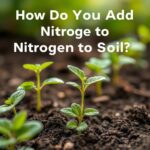
Why is soil pH important for vegetable gardening?
Soil pH is crucial for vegetable gardening because it affects the availability of nutrients to plants. Most vegetables thrive in a slightly acidic to neutral pH range (about 6.0 to 7.0). If the pH is too high or too low, certain nutrients may become locked and unavailable, impacting plant health and productivity.
How often should I test my garden soil?
You should test your garden soil at least once a year, ideally in the spring before planting. This regular testing helps you monitor changes in nutrient levels and pH, ensuring that you can make necessary adjustments for optimal vegetable growth. Regular assessments will also help you track the effectiveness of any amendments you have added to the soil.

If you want to read more articles like How to Choose Good Soil for Vegetable Garden: Tips for Healthy Plants, we recommend you check out our Soil category.
Leave a Reply
Related Articles